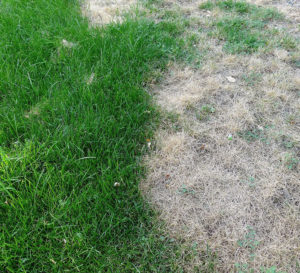 This summer certainly has been tough on the landscape. Strings of 90-degree heat, low humidity and the lack of reliable precipitation have taken their toll on plants and gardeners alike.
This summer certainly has been tough on the landscape. Strings of 90-degree heat, low humidity and the lack of reliable precipitation have taken their toll on plants and gardeners alike.
Even though we may want instant results, it takes time and patience to solve some of summer’s lawn and garden problems. The most important step in the problem-solving process is to diagnose the problem correctly. An incorrect diagnosis can lead to even more problems.
For example, many lawn issues can look similar, but have different causes. That patch of dead grass on the front lawn could be caused by a lack of water, insect damage, a fungus or a dog spot.
If you’re seeing problems in your bluegrass lawn right now, it might be a fungus called summer patch. Sometimes summer patch starts as small circles of dead grass or larger patches that seem to appear overnight.
This plant fungus takes over turfgrass roots when there are extended periods of hot temperatures following wet weather. Sound familiar?
Because summer patch is a root disease, solving this problem means using good lawn practices to encourage healthier roots. One method is to raise the mower height to leave grass blades taller. Aeration to improve drainage may also help.
But lawns that look like they have summer patch might have necrotic ring spot instead. Both show up in the same way in lawns and the only way to know for sure is to have a turfgrass sample evaluated.
You can take a sample to one of the lawn and garden experts at Nick’s or you can contact your county’s Extension office to ask about plant diagnostics. The key to a good diagnosis of the problem is a fresh sample. Once the sample has died or is dry, it’s almost impossible to distinguish one problem from another.
For lawn samples you’ll need a large sample (about the size of a shoebox) that shows the transition from the healthy grass to the affected area. It’s important to keep the roots covered and take the sample in quickly before it dies or dries.
For samples of trees and shrubs, it’s best to take a sample of a branch that’s at least 12 inches long and that has leaves attached. Again, the sample should show both healthy and affected leaves.
Weeds are also easier to identify if you bring in as many fresh plant parts as you can collect.
A good diagnosis takes the guesswork out of solving the problem. Once you know the reason for the plant problem, you’ll be able to discuss the options for controlling it.


